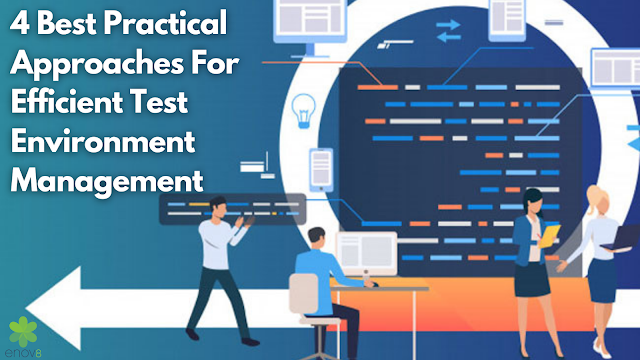4 Best Practical Approaches For Efficient Test Environment Management
Testing is an imperative part of your software development. When you make any changes to the software, codebase testing helps you identify the bugs and ensure that your code is working accurately when released in the real world.
But how should you maintain your testing environments? How can you make your testing more efficient?
Test environment management is the key to maintain your test resources and perform tests for software updates efficiently. However, you need to understand certain approaches to utilise the TEM benefits correctly. Today's article is all about it.
Hire the best resources for TEM and IT project portfolio management for smooth workflow and timely delivery.
What is A Test Environment?
When you specifically arrange your storage components, computer power, datasets and other tools and resources to develop a space for running your tests, you create a test environment.
It can include any virtual or physical tool that you've primarily provisioned for testing your software.
Test environment management involves allocating, monitoring, and maintaining these test environments to be made available to the concerned teams when required.
How Staging And Testing Environments Are Different?
Staging is like the "dry run" before your final play or act is released or broadcasted (in the case of software development before putting it into production).
If you're developing an app for your customer, you show them the staging environment before getting their final approval to go live.
While you may find it similar to the test environment, a staging environment subjects your software application to more realistic scenarios than with the former.
In most software development processes, the staging environment follows the test environment. And the staging replicates the production environment more closely.
Role of Staging Environment
The aim of creating a staging environment is to detect a bug if it somehow manages to escape the test environment. This ensures that issues and concerns with the new updates get addressed before it gets released to the global audience.
4 Best Practical Approaches For Efficient Test Environment Management.
Your hired professional test environment management agency or in-house team should implement the following practice to get the best out of your test environments and achieve optimum results.
Encourage early testing to shorten error logs.
Early testing is not just efficient to detect errors in the preliminary stage, but it also makes our software development process smooth and cost-effective.
Even if you're utilising version control systems to develop your software codebase, don't wait until the last moment to perform the tests on every commit.
Before you accumulate a complex codebase with lines of codes for a build, ensure your team maintains a consistent testing cadence.
Also Read: Is Your Firm Following The Best Practices For Test Environment Management?
Recycle test environments and resources
Recycling has become the new norm for sustainability. Then why not implement it in your software development process?
Here are a few fundamental benefits of recycling your test environments:
- Reduces your testing time and financial expenditure.
- Minimises storage space requirements.
- Limits the risk of exposure to your test environments.
- Promotes faster time to market.




Comments
Post a Comment